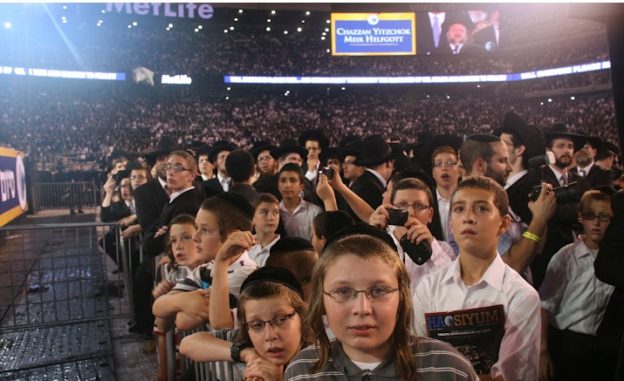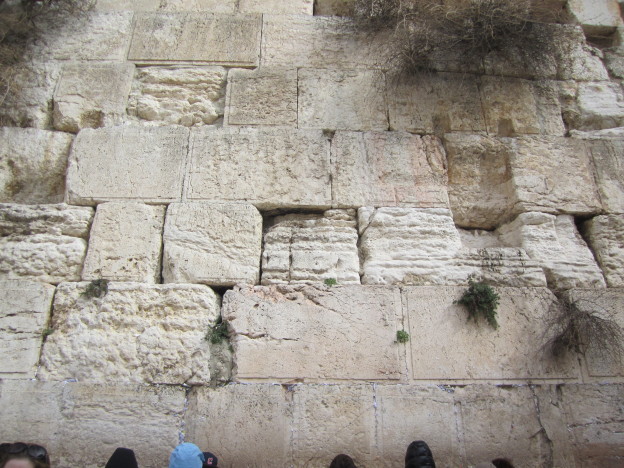Typical of the “mainstream” Jewish organizational responses to the landmark U.S. Supreme Court decision in Obergefell v. Hodges was the American Jewish Committee’s tweet on the day of the ruling that “For 109 years AJC has stood for liberty and human rights. Today is a happy day for that proud tradition,” followed by the hashtag “#LoveWins.”
No less than 13 Jewish groups joined in an amicus brief filed in the case, arguing for the right to same-sex marriage. (Only one group, Agudath Israel of America, filed a brief on the opposing side.)
And typical of the attitude of the groups that collectively call themselves the “Open Orthodox” movement was the reaction of the assistant rabbi of the Hebrew Institute of Riverdale and Director of Recruitment and Admissions at Yeshivat Chovevei Torah. He posted on his Facebook page: “’It is not good for a person to be alone.’ Genesis 2:8. Mazel tov America.” (It’s actually 2:18; and the fellow might wish to check out 2:24, where the solution to man’s lonely situation is described in no uncertain terms as a woman.)
The “Open Orthodoxy” movement’s misrepresentations of Torah in its rush to mindlessly embrace all that the surrounding culture finds pleasing is a worthy topic in its own right. I only mention the movement’s mangling of the Jewish religious tradition here because of how, by laying claim to “Orthodox” credentials, it intensified an already lamentable desecration of Hashem’s name.
The “Open Orthodox” movement, more accurately labeled “Neo-Conservatism,” insists that all people are created in God’s image; hence the recent ruling deserves celebration.
To be sure, none of Jewish tradition’s strong disapproval of homosexual activity means that people with homosexual tendencies are inherently evil or that even avowed homosexuals in any way forfeit their humanity, their Jewishness or their claim to others’ care and compassion. And, particularly in these relativistic, nonjudgmental times, the Jewish response to those who are challenged with same-sex desires should be ten measures of concern for every measure of condemnation.
But that has nothing to do with the redefinition of marriage. The Neo-Conservatives seem blissfully unbothered by the Talmudic statement that asserts that one of larger human society’s redeeming qualities has been its refusal to “write marriage documents for males [living together in homosexual relationships]” – a refusal now withdrawn in the United States.
Although the Obergefell decision was widely celebrated as a new, shiny and wondrous thing, it was hardly an unexpected development. States were legalizing same-sex marriages already. The truth is that when the American entertainment industry made the decision to depict same-sex couples as normative, the war to maintain American society’s traditional view of marriage was, for all purposes, already lost. As went Hollywood, so went the led-by-the-nose American public, with five Supreme Court justices trotting along not far behind.
As a result, the demonization of those who hew to the timeless ideal of marriage being the joining of a man and woman will surely intensify. “Bring on the opprobrium and break out the disparagement. These people deserve it,” writes Jeffrey L. Falick, the “Secular Humanistic Rabbi of The Birmingham Temple Congregation for Humanistic Judaism in Michigan.”
“Shaming them,” he continues, “helps to pave the path to progress.”
And so it is likely that those of us who feel no ill will whatsoever toward anyone for his or her sexual tendencies or behavior but who are branded bigots will experience negative consequences as a result of our religious convictions. Not only in the way we are viewed by people of ill will like the humanistic Jeffrey L, Falick, but by government. Is it alarmist to wonder if federal or state aid to religious schools might be made dependent on those schools hewing to the moral judgments of the Zeitgeist? Is it unthinkable that the tax-exempt status of religious institutions might be assailed by some, drunk on the recent victory of their cause?
In my mind, though, those concerns, real though they are, pale beside one that has not received much attention.
It is conventional wisdom that human beings are bifurcated when it comes to sexuality. There are heterosexuals and homosexuals. That is a fable.
The existence of claimants to bisexuality should in itself explode the myth. And if that isn’t sufficient, then the example of people who have claimed at one point in their lives to be homosexual but at others heterosexual should do the job. Among such people are public figures, like (for those who are culturally current) the late musician Lou Reed or the actress Anne Heche, along with countless unknown men and women.
Why is this important? Because it means that sexuality isn’t an either/or proposition. People, at least some people, can, through environment, change of circumstance or will, morph their sexualities. And objective mental health professionals who have counseled people with unwanted same-sex attraction report success in many, although not all, cases.
What all of this leads me to believe is that there is a wide variety of “sexualities.” There are people (most, I imagine) who do not experience same-sex attraction at all. And others who feel attracted exclusively to members of their own sex. Then there are people with any of an array of balances between the two poles, and a degree of sexual “fluidity” among the population in that middle of the spectrum.
Which means that we can expect a rise with time in the number of young people coming of age and identifying as homosexual or bisexual.
Because, whereas once upon a time such boys and girls would have been guided by society’s general demeanor to develop normally (which adjective I use to mean heterosexually), they will now be inundated by the social environment and subtly pressured to consider developing differently. And yes, there is a measure of consideration, of free will, that is operative here.
What’s more, it is now widely accepted that the human brain is not, as was assumed, a physiologically static organ; it is subject to changes born of experiences and environment – a phenomenon called neuroplasticity.
Which means that the widespread acceptance of homosexuality and homosexual unions threatens the Orthodox Jewish world in an indirect but very real way. Those of us who do not consider it a viable option to isolate ourselves and our families from the larger society will need to confront this unprecedented challenge.
Although I suspect that it may be wise to consider sensitively discussing such issues with younger children than we might wish to have such discussions with, I don’t offer any solutions for meeting that challenge, only a cry that we do all we can to meet it, head-on and soon.


